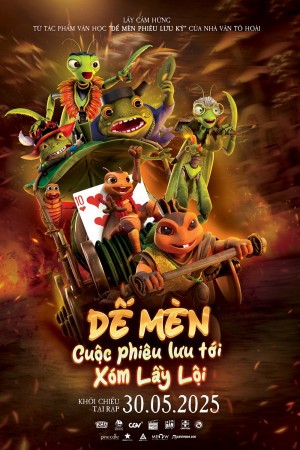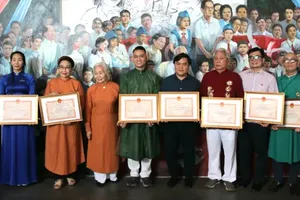After a three-week run in theaters, the Vietnamese animated film Wolfoo va cuoc dua tam gioi (Wolfoo and the Three-Realm Race) has concluded with a modest box office take of just under VND3 billion.

It was the third Vietnamese animation to be released in the summer of 2025, following Trang Quynh nhi: Truyen thuyet Kim Nguu (Little Scholar Quynh: The Legend of Kim Nguu), which earned slightly over VND3.2 billion. These figures stand in stark contrast to De Men: Cuoc phieu luu toi xom Lay Loi (Cricket: The Adventure to Muddy Hamlet), a surprise hit that grossed over VND21 billion (US$802,219).
The performance of these local films pales in comparison to recent foreign animated features. Conan Movie 25: Du anh cua doc nhan (Detective Conan Movie 25: The Phantom of the Monocular ) crossed the VND100 billion mark in just five days while Doraemon finished its theatrical run with nearly VND170 billion. This dominance of foreign films is a significant concern for those in the Vietnamese animation industry.
Domestic productions often face limited resources, short timelines, and less experienced teams, making it difficult to compete with international counterparts that have massive budgets and established reputations. This has led to a lack of audience trust, with many viewers hesitant to buy tickets for Vietnamese animated films even for popular brands like Wolfoo, which has a huge following on YouTube.
Despite the box office challenges, it's important to note the qualitative improvements in Vietnamese animation. Films like Cricket, Little Scholar Quynh, and Wolfoo have been praised for their efforts in exploring Vietnamese folklore, creating unique character designs, and improving technical quality. While a gap between domestic and foreign animation still exists, it is gradually shrinking. These films are laying the groundwork for a unique identity for Vietnamese animation, though this journey will require patience and long-term investment.
The creators of these films have shown great courage and potential. However, their individual efforts must be supported by comprehensive strategies from both the government and the private sector. Coordinated support in policy, funding, workforce development, scriptwriting, technology, and distribution is crucial to shift the imbalance between domestic and international films and help Vietnamese animation win back its home-field advantage.



)




















